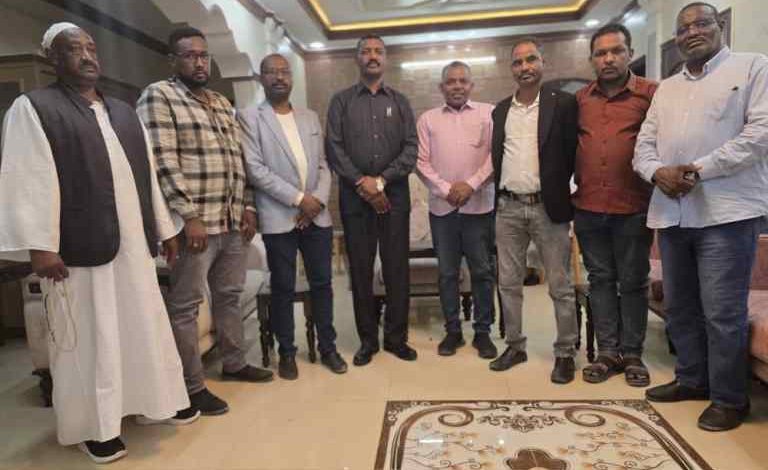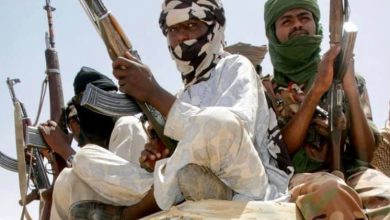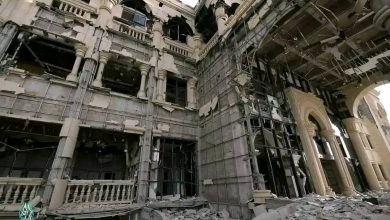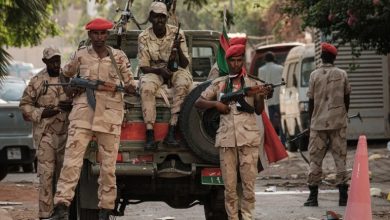With Kekel… Stories and Tales from the Sudan War

Report by Talal Ismail
In a salon in Port Sudan, the capital of the Red Sea State, on Sunday evening, the commander of the Sudan Shield Forces – which support the Sudanese army – Abu Aqla Kekel, sat down with prominent media figures, columnists, and editors-in-chief to share secrets from the Sudan war that erupted in mid-April 2023.
At the start of the media briefing, Kekel presented an overview of the military operations, affirming: “We will soon reach the drone launch area in Darfur. The operational situation is very reassuring.”
He pointed to the field advances made by the armed forces and their supporting units, including the Sudan Shield Forces, through planned strategies to regain control over Kordofan and Darfur.
Kekel expressed his belief that victory is very near.
Why Did He Join the Rapid Support Forces?
Kekel said he initially joined the Rapid Support Forces (RSF) thinking they had a legitimate cause. However, their acts of killing, looting, and robbing civilians prompted him to contact security and military leadership to announce his defection to the Sudanese army.
He added: “After the war broke out, my main concern was protecting civilians from these violations by any means necessary.”
Kekel detailed his efforts to prevent the RSF militia from committing more violations in Al-Jazirah State after their entry on December 19, 2023.
“I deployed checkpoints from my forces in eastern Al-Jazirah and was inspecting villages in the west of the state from which reports of violations were coming,” he said.
He noted several clashes occurred during the RSF’s control of Al-Jazirah between his forces and those of Gujja and Hassan Al-Turabi – both RSF commanders – as Kekel tried to stop them from looting and robbery.
How Did the RSF Seize Wad Madani?
The question of how the RSF entered Wad Madani, the capital of Al-Jazirah, remained critical, and journalists asked Kekel for clarification.
Kekel explained: “I was meeting with Mohamed Hamdan Dagalo (Hemedti) at his house in Khartoum 2 throughout the early phase of the war, along with top RSF leaders, including Osman Operations. Hemedti asked me to swear an oath in front of General Hassan Mahjoub and prepare to take control of Al-Jazirah State. Hemedti then told me: ‘Kekel, you are the commander of the Fifth Division.’”
Kekel described feeling as if water had been poured over his head – he was shocked. “I was surprised by this decision,” he said.
Hemedti gave him the phone numbers of two officers to coordinate with. Kekel stressed: “Despite my differences with Brigadier General Ahmed Al-Tayeb, commander of the army’s First Division at the time, I testify that he was not responsible for the RSF’s entry into Wad Madani, and I’m willing to testify in court.”
Kekel said he tried every possible means to stop the RSF from advancing into Al-Jazirah after appearing in a video from Eidij in eastern Al-Jazirah and returning to Khartoum, but Hemedti insisted on proceeding after evaluating the battlefield situation.
He shared sensitive military details and secrets about betrayal the Sudanese army faced at the Hantoub Bridge, but requested they not be published as they were submitted to intelligence services.
Phone with Emirati Number
The Sudan Shield commander confirmed that Hemedti uses a phone with a private UAE number for most of his communication with senior RSF leaders. He distributed similar Emirati numbers to his top commanders and instructed them to only contact him via that specific number.
Why Didn’t He Enter Gedaref?
When asked why he didn’t advance into Gedaref State, Kekel said: “Hemedti asked me to prepare to enter Gedaref before I joined the army on October 20, 2024. That’s when I realized how dangerous the matter was.”
He said Hemedti had prepared 180 combat vehicles, two fuel tankers (for gasoline and diesel), and two ammo trucks, in addition to 60 combat cars under Kekel’s command, to enter Gedaref and secure the highway to Ethiopia.
He continued: “I contacted the security and military agencies after receiving orders to take Gedaref. On my way back to Tamboul, I noticed I had been removed from a WhatsApp group that included RSF leaders. That’s when I realized I had to surrender to the army.”
Kekel asked that military details about this defection and the associated plans remain unpublished.
Kekel and Al-Bishi
The media delegation asked about the assassination of RSF commander Abdul Rahman Al-Bishi and whether Kekel was behind it. Kekel replied: “The information mentioned by Abu Shotal is false. I had nothing to do with Al-Bishi’s death.”
He pointed to one of his guards standing behind him, who witnessed the incident. Al-Bishi’s car was struck by an Antonov airstrike while he was traveling from the sugar factory to Sennar.
On the video showing Kekel dancing after rumors spread that his legs were amputated, he said: “Yes, I was injured in the head, but my legs were not amputated. I had to record the video to prove that, despite the pain.”
He added: “This injury prevented us from entering Sennar, even though Hemedti had ordered us to. I returned to Al-Jazirah with over 200 combat vehicles.”
Entering Sennar and the Black Bull
Kekel shared a humorous anecdote about the RSF not entering Sennar. Hemedti asked him: “What’s in Sennar?”
Kekel replied that a sheikh had told him: “There is a black bull near the entrance to Sennar. If it dies, you’ll be able to enter. If it lives, there’s no way in.”
Hemedti asked: “So, what did you find?”
Kekel answered: “We found it jumping around.”
Initiatives
Kekel confirmed he had no issues with armed movements. In his controversial statement, he was addressing the Ministry of Finance about the Gezira Project, not the Justice and Equality Movement (JEM) leader.
He clarified that businessmen are initiating efforts to bring him and JEM leader Dr. Gibril Ibrahim together to discuss Sudan’s situation and resolve conflicts.
Source: Al-Muhaqqiq News Website



